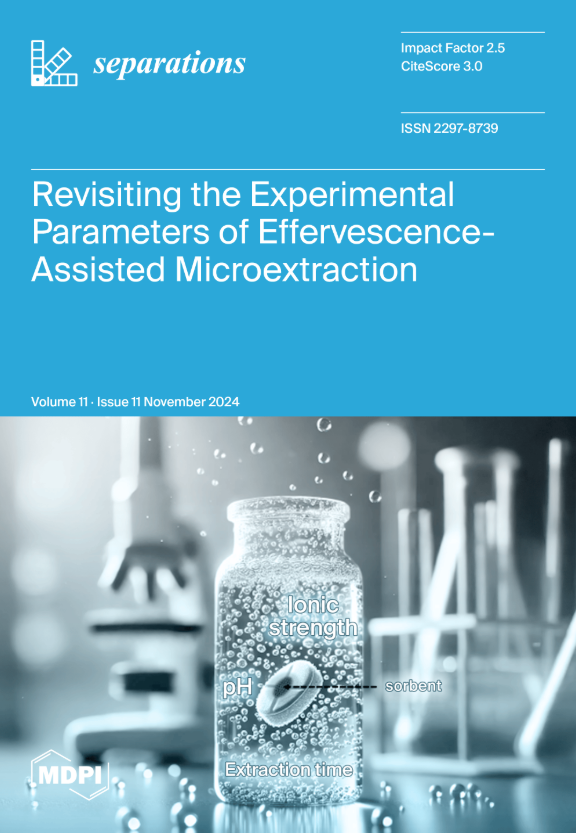Innovative Solutions for Food Analysis: Microextraction Techniques in Lipid Peroxidation Product Detection
IF 2.5
4区 工程技术
Q3 CHEMISTRY, ANALYTICAL
引用次数: 0
Abstract
Lipid peroxidation, the most aggressive reaction in food, results in the formation of reactive organic compounds that detrimentally impact food sensory qualities and consumers’ health. While controlled lipid peroxidation can enhance flavors and appearance in certain foods, secondary peroxidation products lead to sensory deterioration in a variety of products, such as oils, alcoholic beverages, and meat. This publication reviews the use of modern analytical techniques for detecting and quantifying carbonyl compounds, i.e., secondary lipid peroxidation products. The paper focuses specifically on microextraction-based methods: dispersive liquid-liquid microextraction (DLLME), solid-phase microextraction (SPME), and gas-diffusion microextraction (GDME). These techniques offer efficient and sensitive approaches to extracting and quantifying lipid oxidation products and contribute to the understanding of oxidative deterioration in various food products. The review outlines recent advancements, challenges, and limitations in these microextraction techniques, as well as emphasizes the potential for further innovation and improvement in the field of food analysis.食品分析的创新解决方案:脂质过氧化产物检测中的微萃取技术
脂质过氧化反应是食品中最具攻击性的反应,会导致活性有机化合物的形成,对食品的感官品质和消费者的健康产生不利影响。虽然受控的脂质过氧化可以增强某些食品的风味和外观,但二次过氧化产物会导致各种产品(如油、酒精饮料和肉类)的感官退化。本出版物回顾了使用现代分析技术检测和定量羰基化合物,即二次脂质过氧化产物。本文重点介绍了基于微萃取的方法:分散液液微萃取(DLLME)、固相微萃取(SPME)和气体扩散微萃取(GDME)。这些技术为提取和定量脂质氧化产物提供了高效、灵敏的方法,有助于了解各种食品中的氧化变质。本文概述了这些微萃取技术的最新进展、挑战和局限性,并强调了在食品分析领域进一步创新和改进的潜力。
本文章由计算机程序翻译,如有差异,请以英文原文为准。
求助全文
约1分钟内获得全文
求助全文
来源期刊

Separations
Chemistry-Analytical Chemistry
CiteScore
3.00
自引率
15.40%
发文量
342
审稿时长
12 weeks
期刊介绍:
Separations (formerly Chromatography, ISSN 2227-9075, CODEN: CHROBV) provides an advanced forum for separation and purification science and technology in all areas of chemical, biological and physical science. It publishes reviews, regular research papers and communications. Our aim is to encourage scientists to publish their experimental and theoretical results in as much detail as possible. There is no restriction on the length of the papers. The full experimental details must be provided so that the results can be reproduced. There are, in addition, unique features of this journal:
Manuscripts regarding research proposals and research ideas will be particularly welcomed.
Electronic files and software regarding the full details of the calculation and experimental procedure, if unable to be published in a normal way, can be deposited as supplementary material.
Manuscripts concerning summaries and surveys on research cooperation and projects (that are funded by national governments) to give information for a broad field of users.
The scope of the journal includes but is not limited to:
Theory and methodology (theory of separation methods, sample preparation, instrumental and column developments, new separation methodologies, etc.)
Equipment and techniques, novel hyphenated analytical solutions (significantly extended by their combination with spectroscopic methods and in particular, mass spectrometry)
Novel analysis approaches and applications to solve analytical challenges which utilize chromatographic separations as a key step in the overall solution
Computational modelling of separations for the purpose of fundamental understanding and/or chromatographic optimization
 求助内容:
求助内容: 应助结果提醒方式:
应助结果提醒方式:


